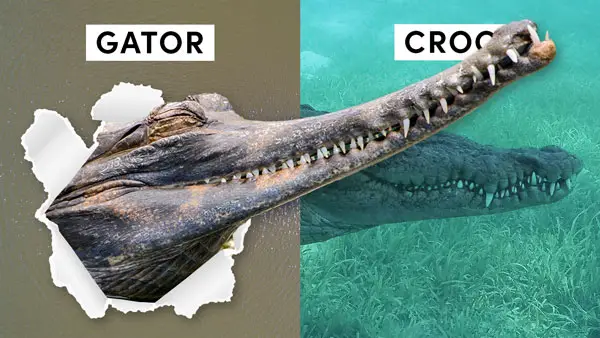All 27 Species of Crocodilian (Inc. 3 Recently Discovered)
There are several ways to distinguish an alligator from a crocodile and only one location on earth where their ranges overlap. All crocodilians have long elongated bodies with powerful tails, short limbs and armour-like scales known as scutes. Their skulls on the other hand vary in structure and provide the most interesting contrast between species. The profile of the snout is the first noticeable difference; alligators have wider, more compact snouts whereas those of most crocodiles taper towards the nose. This shape is even further accentuated in some species. The position of the teeth when the jaw is closed is also a distinguishing feature; In alligators and some caiman, the teeth of the lower jaw fit into sockets in the upper jaw and are not visible when the mouth is closed. In crocodiles, some of these teeth sit in notches on the outside of the upper jaw and therefore are visible to a varying degree when the mouth is closed. Our journey into the world of crocodilians starts here in south Florida, the only location on earth where alligators and crocodiles coexist.
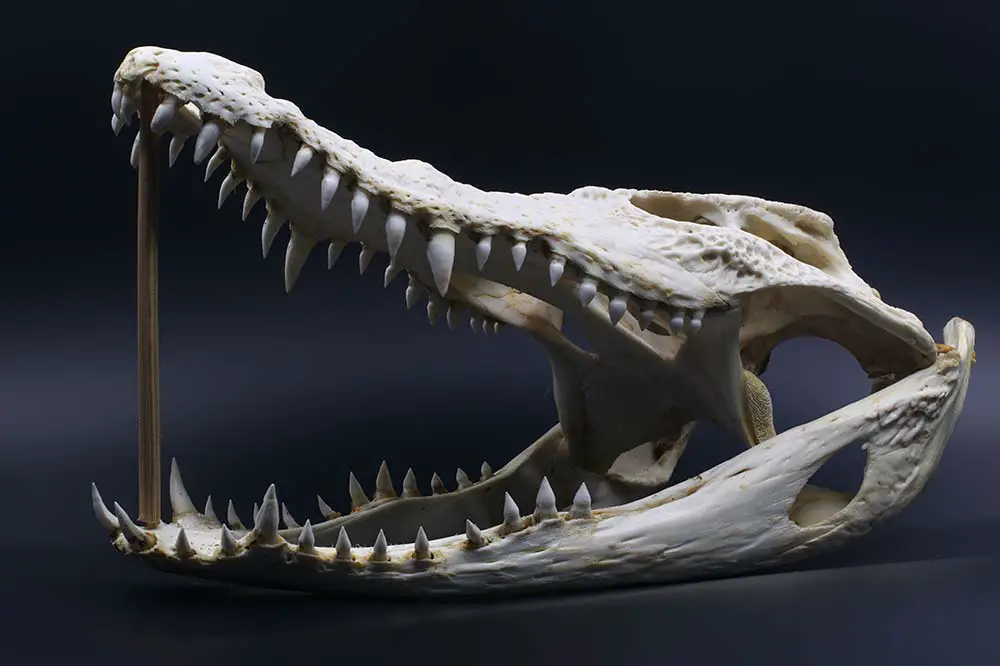
Contents
- American crocodile | Crocodylus acutus
- American alligator | Alligator mississippiensis
- Chinese alligator | Alligator sinensis
- Cuvier’s dwarf caiman | Paleosuchus palpebrosus
- Smooth-fronted caiman | Paleosuchus trigonatus
- Spectacled caiman | Caiman crocodilus
- Broad-snouted caiman | Caiman latirostris
- Yacare caiman | Caiman yacare
- Black caiman | Melanosuchus niger
- Orinoco crocodile | Crocodylus intermedius
- Morelet’s crocodile | Crocodylus moreletii
- Cuban crocodile | Crocodylus rhombifer
- Nile crocodile | Crocodylus niloticus
- Dwarf crocodile | Osteolaemus tetraspis
- West African crocodile | Crocodylus suchus
- West African slender-snouted crocodile | Mecistops cataphractus
- Central African slender-snouted crocodile | Mecistops leptorhynchus
- Gharial | Gavialis gangeticus
- False gharial | Tomistoma schlegelii
- Mugger crocodile | Crocodylus palustris
- Saltwater crocodile | Crocodylus porosus
- Freshwater crocodile | Crocodylus johnstoni
- New Guinea crocodile | Crocodylus novaeguineae
- Hall’s New Guinea crocodile | Crocodylus halli
- Siamese crocodile | Crocodylus siamensis
- Borneo crocodile | crocodylus raninus
- Philippine crocodile | Crocodylus mindorensis
1 – American crocodile | Crocodylus acutus
The American crocodile is one of the world’s largest reptiles, with a maximum weight of 2,000 lbs (907 kg) and lengths of up to 20 ft (6 m). They can be distinguished by their lighter olive-coloured skin, especially when it’s dry. As well as being found in freshwater ecosystems such as rivers, American crocodiles have a high tolerance for salinity and are often found in coastal waters and brackish ecosystems such as estuaries and mangrove swamps. Crocodilians are referred to as “cold-blooded”, lacking the ability to regulate their own body temperature internally. As such, they can often be found sunbathing at the water’s edge to warm up. While on land, they use a behaviour known as “mouth-gaping”, which amongst other reasons is thought to further assist thermoregulation through evaporation. Once they are too hot, they retreat back to the water to cool down. There are estimated to be around 5,000 individuals in the wild which is alarmingly low when compared to the estimated 1,000,000 American alligators found in a smaller range.

2 – American alligator | Alligator mississippiensis
The American alligator is much darker and is also smaller in size measuring 10 to 15 ft in length (3 to 4.6m) and weighing up to 1,000 lbs (454 kg). Gators have a low tolerance for salt and are therefore not usually found in brackish waters, preferring freshwater habitats such as lakes and rivers. When on land, these creatures often use a high-walk, lifting their bodies off the ground and dragging their tails. American alligators are one of the most vocal species of crocodilian; a study in the Journal of Experimental Biology suggests they use deep bellows to communicate body size. They breed once per year during the spring and lay a clutch of eggs in a nest, which usually contains around 40 eggs. Hatchlings measure 6 to 8 inches (15 to 20 cm) and will spend 1 to 2 years with their mother before reaching independence. There are only two species of alligator, both of which exist at the same latitude but on different sizes of the world.

3 – Chinese alligator | Alligator sinensis
The Chinese alligator is found in far eastern China in the lower Yangtze River basin and quite frankly is adorable. These miniature monsters are some of the smallest crocodilians, averaging 5 ft (1.5 m) in length and weighing no more than 100 lbs (45 kg). Like their American cousins, they are dark in colour and their young display yellow bands across their bodies. Living at such high latitudes for cold-blooded animals, winter poses a problem for Chinese alligators who create burrows and become dormant from late fall until early spring when they emerge to enjoy the sun. They have dull teeth, which help them crack the shells of molluscs such as snails as well as preying on fish, invertebrates, small mammals and aquatic birds. This species is critically endangered; with estimates ranging from just 70 – 300 remaining in the wild. Both species of alligator are part of the Alligatoridae family, which also contains 6 species of caiman, found in Central and South America.

4 – Cuvier’s dwarf caiman | Paleosuchus palpebrosus
The world’s smallest caiman, Cuvier’s dwarf caiman, also holds the title of the world’s smallest crocodilian, averaging 4.5 ft (1.4 m) in length and weighing just 13 to 15 lbs (6 to 7 kg). They are quite beautiful with dark, almost black backs and colourful reddish-brown heads. In many crocodillians, including dwarf caimans, the incubation temperature of the eggs has been shown to determin the sex of the hatchlings. Cooler temperatures produce more female young, whereas warmer temperatures produce greater numbers of male hatchlings. This is known as TSD: temperature-dependent sex determination, which is also present in some turtle species. Dwarf caimans bask during the day and hunt at night, preying upon fish, small mammals, frogs and a variety of invertebrates. They are very similar in appearance to the smooth-fronted caiman, a species that gets its name from the lack of a ridge between the eyes that is present in some of the caimans we’ll discuss next.

5 – Smooth-fronted caiman | Paleosuchus trigonatus
Centred around the Amazon and Orinoco basins, smooth-fronted caimans have a very similar range to that of the Cuvier’s dwarf caiman. Although still small, these caimans are slightly larger, usually measuring no more than 6 ft (1.6 m) and weighing up to 45 lbs (20 kg). Clutch size is between 10 to 20 eggs, which won’t hatch for 100 days. Interestingly, nests are often built next to termite mounds, which act as a source of heat. Hatchlings are very colourful and have a golden crown on the top of their head, which fades as they grow. Their diet also changes with age; hatchlings feast on small invertebrates, progressing to small fish, birds and other reptiles. Adults, who are semi-terrestrial, will also prey on larger mammals such as porcupines and pacas, a cool-looking rodent from Central and South America.
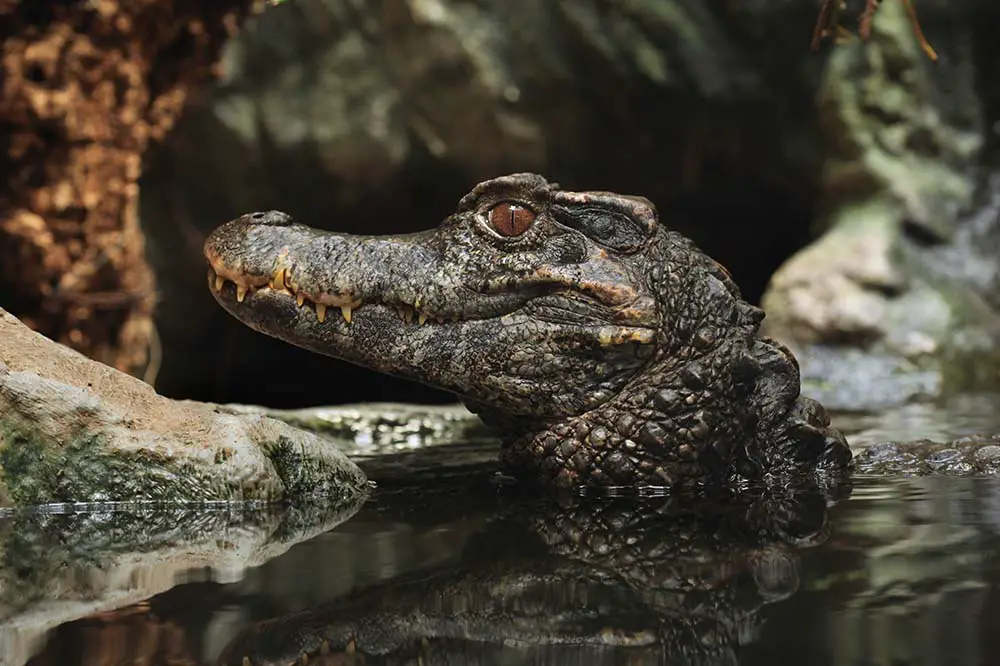
6 – Spectacled caiman | Caiman crocodilus
The spectacled caiman, also known as the common caiman, is named for the exact opposite reason to the Smooth-fronted caiman, exhibiting a bony infra-orbital bridge in between the eyes, giving the appearance of spectacles. On average, they measure 6.5 ft in length (2 m) and weigh 90 lbs (40 kg). These cheery-looking crocodilians are active mainly at night and spend most of the day basking in the sun, with a quick dip around mid-day when the sun is the highest in the sky. Spectacled caimans are generalist carnivores, preying on a wide range of animals from insects and fish to birds and mammals. Thankfully, their conservation status is least concern with an estimated 1,000,000 individuals in the wild.

7 – Broad-snouted caiman | Caiman latirostris
Another species of caiman that exhibits the bridge between its eyes is the broad-snouted caiman which is easily distinguished by its exceptionally broad snout. Their range is quite different, being found in southeastern South America in comparison to the spectacled caiman, which is found further north. They are also slightly larger, usually measuring no more than 8 ft (2.5 m) but have been recorded up to 11.5 ft (3.5 m). Like all crocodilians, their eyes, nose and ears, which lie just behind the eyes, are positioned on the very top of their head, allowing them to see, breath and hear all while being almost completely submerged. Many individuals exhibit spots on the jaw, a trait they share with a very similar caiman who can be distinguished by a narrower snout.

8 – Yacare caiman | Caiman yacare
The Yacare caiman also shares the ridge between the eyes and in some individuals but not all, some of the lower teeth fit into holes in the upper jaw. These animals use a cooperative feeding tactic called collective fishing that sees up to 15 individuals stretched across the width of a river to catch passing fish. A large portion of their diet is also made up of snails and other invertebrates but like many other species will prey on a broad variety of animals. Crocodilians tend to be sexually dimorphic, with male individuals being larger than females. Male Yacare caimans will grow to almost 10 ft (3 m) in length and weigh no more than 130 lbs (128 lbs / 58 kg), while females reach a maximum of 6 to 8 ft (1.8 to 2.5 m). They have a large population of between 2 to 5 million in a relatively small range in central South America, which overlaps slightly with the range of the largest caiman species, the black caiman.
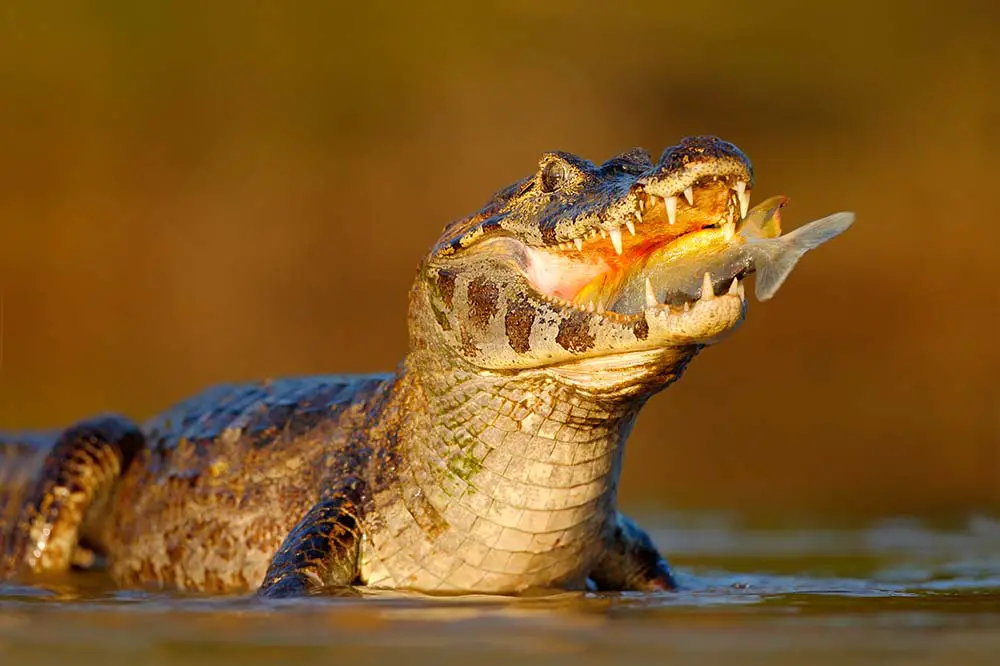
9 – Black caiman | Melanosuchus niger
Interestingly, while black caiman also have the ridge between their eyes, they are from a separate monotypic genus to the spectacled, broad-snouted and Yacare caimans. They also have spots on their lower jaw although as you would expect, black caimans are darker in colour. These giant creatures are not only the largest caiman but are also one of the largest crocodilians with males reaching over 16 ft in length (5 m / 16.4 ft). These animals prey on larger mammals than other species, including the capybara, the largest rodent on earth that can weigh up to 150lbs (68 kg). In addition to the 5 species of Caiman and the American crocodile, there are 2 additional members of the Crocodylidae family located in Central and South America.
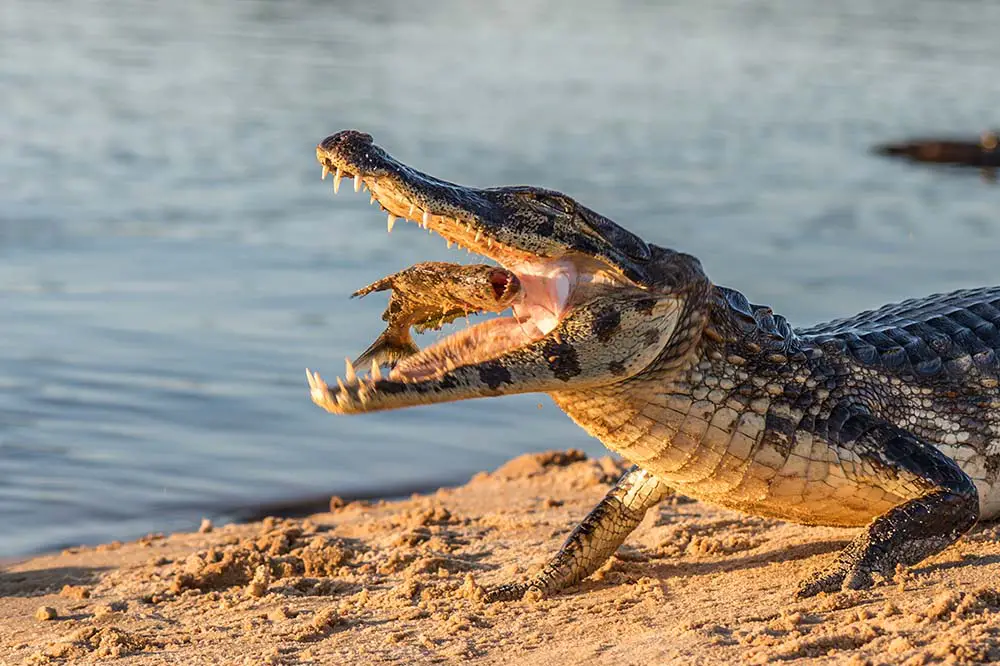
10 – Orinoco crocodile | Crocodylus intermedius
The largest of these species, the Orinoco crocodile is a similar size to the black caiman and American crocodile, often reaching up to 16 ft (4m) in length but have been reported at well over 20 ft (23 ft / 7m). These animals are quite distinct in appearance with light olive skin decorated with black spots. Their long, slender snouts are also a distinguishing feature and enable them to catch a large amount of aquatic prey, primarily fish, thanks to a reduction in water resistance. Orinoco crocodiles are critically endangered, with some estimates suggesting there are less than 100 remaining in the wild. They are found in the Orinoco river basin, which lies north of the Amazon and 3,000 km southeast of the next species that we’ll discuss, the Morelet’s crocodile, found in Mexico, Belize and Guatemala.
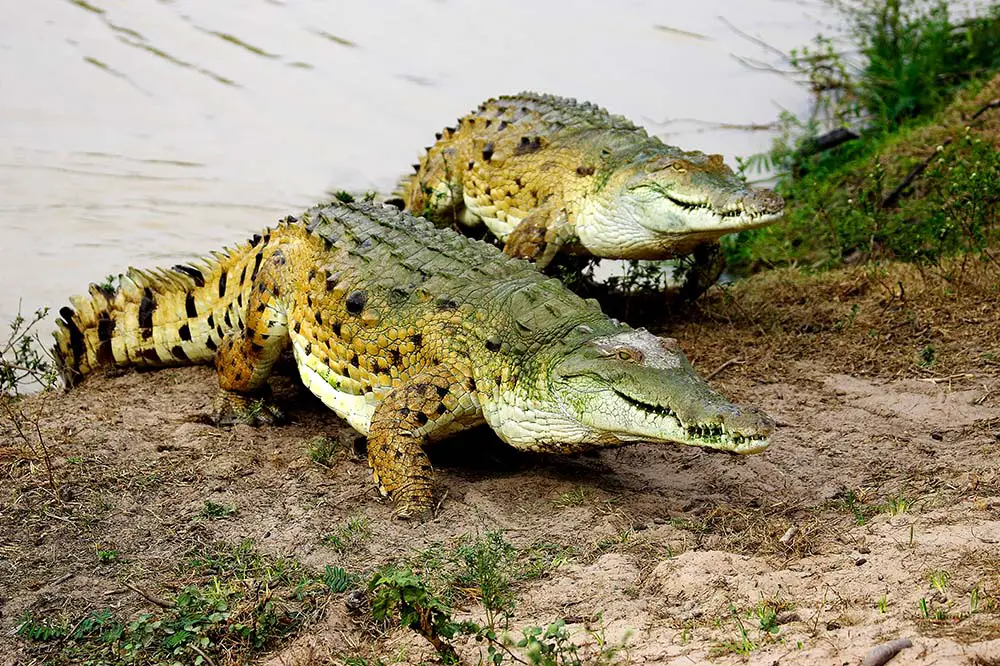
11 – Morelet’s crocodile | Crocodylus moreletii
This species is known for its uncharacteristically blunt snout, which is more similar to that of an alligator or caiman than it is to the rest of the Crocodylidae family. They are quite a bit smaller than the two species previously discussed, with an average length of 10ft (3m) and an average weight of just over 100lbs (112 lbs / 51 kg). All Crocodilians have rows of raised scutes along their backs. This shape is caused by bony deposits known as osteoderms that give the dorsal scutes their raised appearance. Osteoderms can be a range of shapes and are also present on the ventral side of the body. The Morelet’s crocodile lacks these ventral osteoderms, producing a smoother belly than other crocodiles.

12 – Cuban crocodile | Crocodylus rhombifer
Found due east in the Caribbean, the Cuban crocodile is the last species we’ll discuss in the Americas. It is critically endangered and has the smallest range of any crocodile, found in just two swamps in Cuba. These animals are relatively small for crocodiles, usually reaching no longer than 10.5 ft (3.5 m / 10.5 ft) in length and weighing no more than 180 lbs (80 kg). The bony ridge that starts just behind the eye and above the ear and runs to the back of the head is more accentuated in this species. Cuban crocs are quite colourful, with black and yellow scales and have strong, powerful tails which they use to launch themselves out of the water, which looks terrifying!
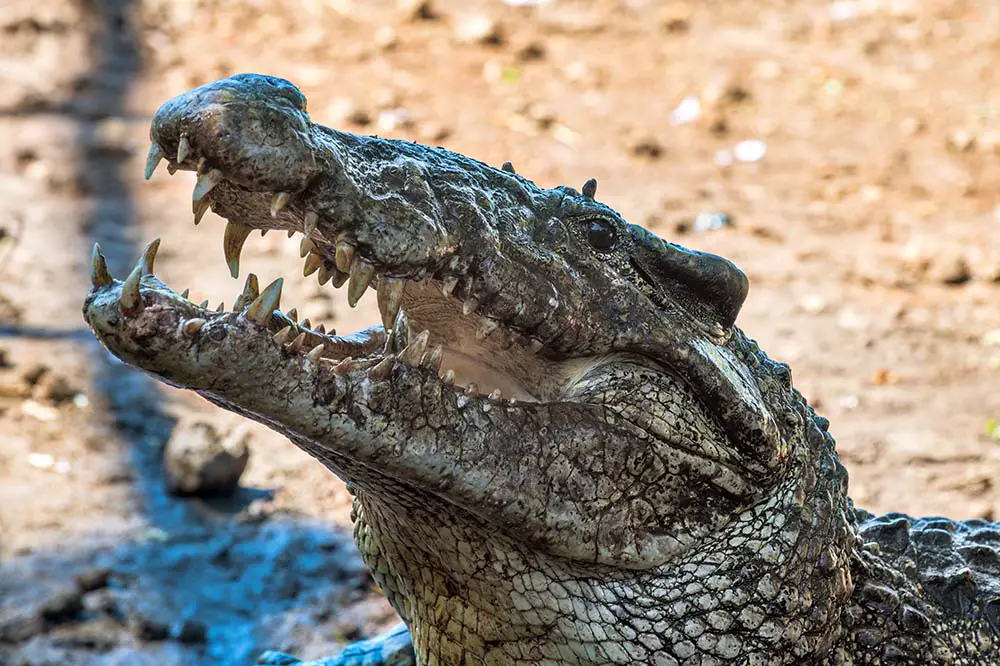
13 – Nile crocodile | Crocodylus niloticus
To continue our journey, we need to travel over 10,000 km across the Atlantic Ocean to Africa to visit the crocodilian with the strongest bite force of any animal on earth, the Nile crocodile. Although they are smaller than saltwater crocodiles, at 5,000 PSI their bite force is considerably stronger. They use this strength in combination with a technique named the “death roll” to tear flesh from carcasses of the large mammals they consume along with fish, reptiles and birds. Life for a Nile crocodile starts in a clutch of 25 to 80 eggs, which hatch after an incubation period of around 90 days. Hatchlings will stay with their mothers for up to 2 years while learning to navigate the complicated and treacherous African waters. One of their most interesting behaviours is burrow-digging. Individuals who live in the southernmost areas of their range will spend the cooler part of the year inside of these burrows in a state of dormancy known as aestivation. While these animals are known to be some of the largest crocs in the world measuring up to 20 ft (6.2m) in length and weighing up to 2,400lbs (1089 kg), their size varies considerably throughout their range and actually averages out to just 15 ft (4.6 m) in length and 500 to 900 lbs (227 kg to 408 kg) in weight.

14 – Dwarf crocodile | Osteolaemus tetraspis
On the other end of the scale, the dwarf crocodile is the world’s smallest crocodile. They usually measure around 5 ft (4.9 ft / 1.5m) and weigh between 40 to 70 lbs (18 to 32 kg) with the largest males weighing up to 180lbs. They have a short blunt snout, similar to that of the dwarf caiman. Their young are quite colourful, exhibiting spots along the jaw and onto their body. Some adults appear to retain these spots whereas others are almost entirely dark grey. Dwarf crocodiles live in streams, small rivers and other aquatic ecosystems and are known to move between these environments on land. They are found in both West and Central Africa, where their range presumably overlaps with a much larger species, the West African crocodile.

15 – West African crocodile | Crocodylus suchus
Although it was first suggested as a separate species by Étienne Geoffroy Saint-Hilaire in 1807, the West African crocodile was only confirmed as a separate species to the Nile crocodile between 2011-2015 thanks to genetic testing. As such, they are very similar in appearance to the Nile crocodile although tend to be smaller in size, usually measuring 5 – 8 ft (1.5–2.5) in length.
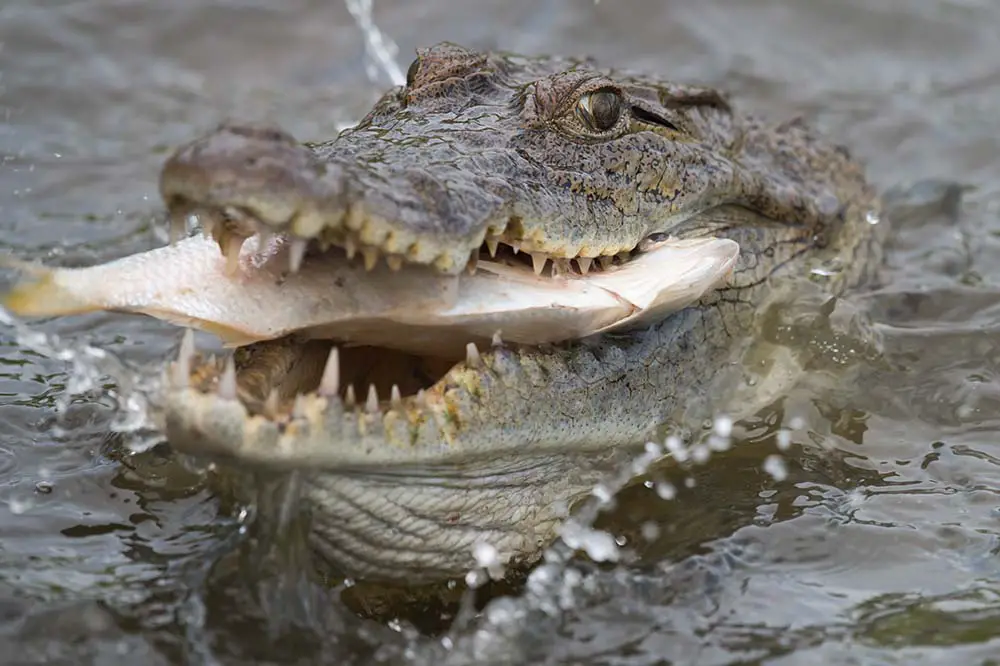
16 & 17 – West/Central African slender-snouted crocodiles | Mecistops cataphractus/leptorhynchus
The remaining species located in West and Central Africa, the African slender-snouted crocodile is also the last remaining species on the African Continent and has also been subject to taxonomic debate. They are characterised, of course, by their slender snouts and are medium in size, usually measuring no more than 13 ft (4m). They mostly live in freshwater ecosystems where, as well as preying on fish, adults will lie in wait for mammals to drink at the water’s edge. In 2018, this species was determined to, in fact, be two species separated geographically by the Cameroon volcanic line. This chain of volcanoes is unusual as it includes both mainland volcanoes such as the active Mount Cameroon, seamounts and islands such as São Tomé and Príncipe. I digress. Individuals found to the west of this line are West African slender-snouted crocodiles and those to the east are Central African slender-snouted crocodiles. But these slender snouts are not the most slender of crocodilian snouts. Found over 7,000 km away in Asia are two species with exceptionally narrow snouts.
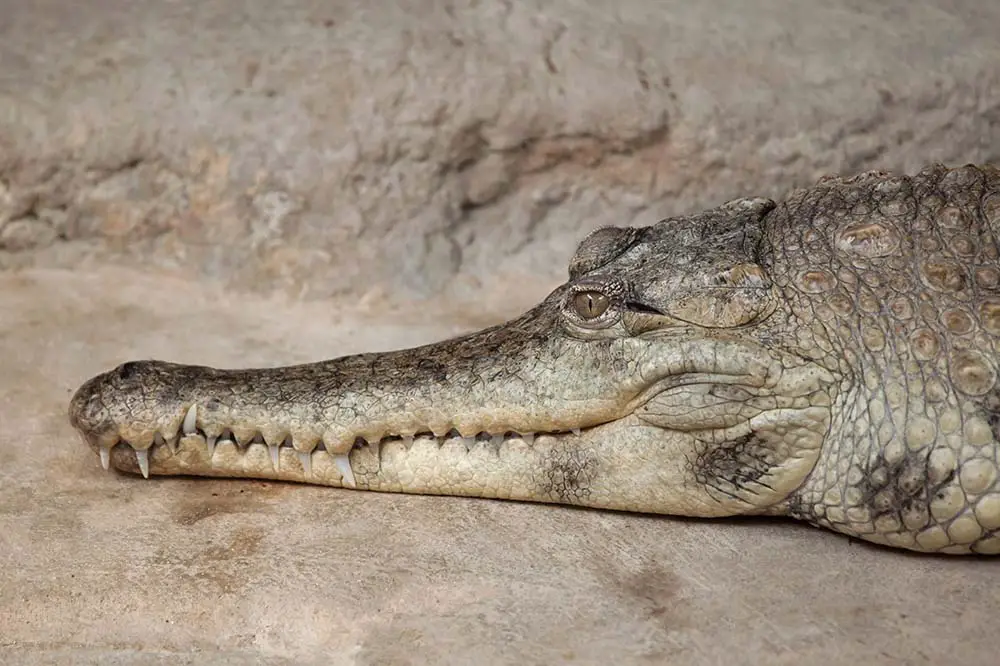
18 – Gharial | Gavialis gangeticus
The Gharial and the false gharial, otherwise known as the Tomistoma, are 2 of the most unique crocodilians. They are both contained within the Gavialidae family and are more closely related to crocodiles than they are to alligators or caiman. Gharials have the most narrow snout profile of all crocodilian species and are also one of the largest with males reaching up to 20 ft (6m) in length. They are known as the fish-eating crocodile for their fish-catching prowess and are known to be especially inefficient on land. They display a yellowish-white belly and are dark greenish-brown on their dorsal side with scutes that are much less pronounced than many other species. Gharials live in freshwater rivers and can often be seen basking on the banks to warm up, particularly during winter. They are found in small isolated pockets in South Asia and are critically endangered with less than 1,000 remaining in the wild. The closest relative to this species, the false gharial or Tomistoma is found across the Bay of Bengal and has one of the most unique colourations of all the species we’ll discuss.

19 – False gharial | Tomistoma schlegelii
The false gharial, also known as the Malayan gharial or Tomistoma, referencing the name of its genus, has a similar narrow snout but is reddish-brown with black cross bands and spots throughout the body and jaw. They are smaller than gharials, with male individuals measuring up to 16.5 ft (5m) and weighing no more than 460 lbs (210 kg). They breed twice a year and clutches will usually contain 20 to 60 eggs. Similar to other crocodilians, they are thought to live for up to 60 to 80 years and are currently listed as vulnerable with less than 10,000 remaining in the wild. Before we explore the crocodilians of Oceania and Southeast Asia, we need to travel back to India to pick up one straggler with a cheeky smile.

20 – Mugger crocodile | Crocodylus palustris
Mugger crocodiles are more akin to regular crocodiles, being part of the Crocodylidae family, where we’ll remain for the rest of this video. Its Latin name, palustris is commonly used in taxonomy and means swampy or marshy, referencing some of the habitats where it abides although they are also found in rivers, lakes and other freshwater ecosystems. They are characterised by a board snout, which is unusual for crocodiles and is one of the broadest in this entire family. They are medium-sized, roughly the same length as a Tomistoma, with males measuring no more than around 16ft (5m). Although not pictured here, perhaps their most interesting trait is tool usage; researchers collected evidence of Mugger crocs using sticks balanced on their snouts during the breeding season of certain waterbirds in an attempt to lure those building nests to a snappy end.

21 – Saltwater crocodile | Crocodylus porosus
The only other crocodile whose range overlaps with the mugger is the saltwater crocodile, which with its high tolerance for salinity, has a massive range, which is fitting for its gigantic size and reputation. Saltwater crocs are the largest reptiles on earth, measuring up to 23ft (7m) in length and weighing up to a scary 2,600 lbs (1,200 kg / 2,643 lbs). All crocodilians have webbed feet, especially their hind feet which they use to assist with swimming. Saltwater crocs are exceptionally good swimmers and live in a wide range of habitats including freshwater rivers, brackish mangrove swamps and salty coastal waters, even being spotted far out to sea. They have the second-largest bite force of any crocodilian and prey on a wide range of animals including water buffalos, wild boar and monkeys who they snatch from the water’s edge. They are affectionately referred to as ‘salties’ in Australia, where one other species of crocodile can be found.

22 – Freshwater crocodile | Crocodylus johnstoni
‘Freshies’ or freshwater crocodiles are found only in northern Australia and are another species with a slender snout. They are found in various freshwater settings including swamps, billabongs and rivers, although they tend not to venture too far downstream due to a low tolerance of salinity and to avoid competition with the much larger ‘salties’. They generally do not exceed 12 ft (3 m) in length or 220 lbs (100 kg) in weight. The average clutch size is smaller than many species previously discussed at around 13-20 eggs, laid in the dry season, between August and September. Hatchlings will pop out of their shell after 65-95 days before the wet season rains begin and food becomes plentiful.
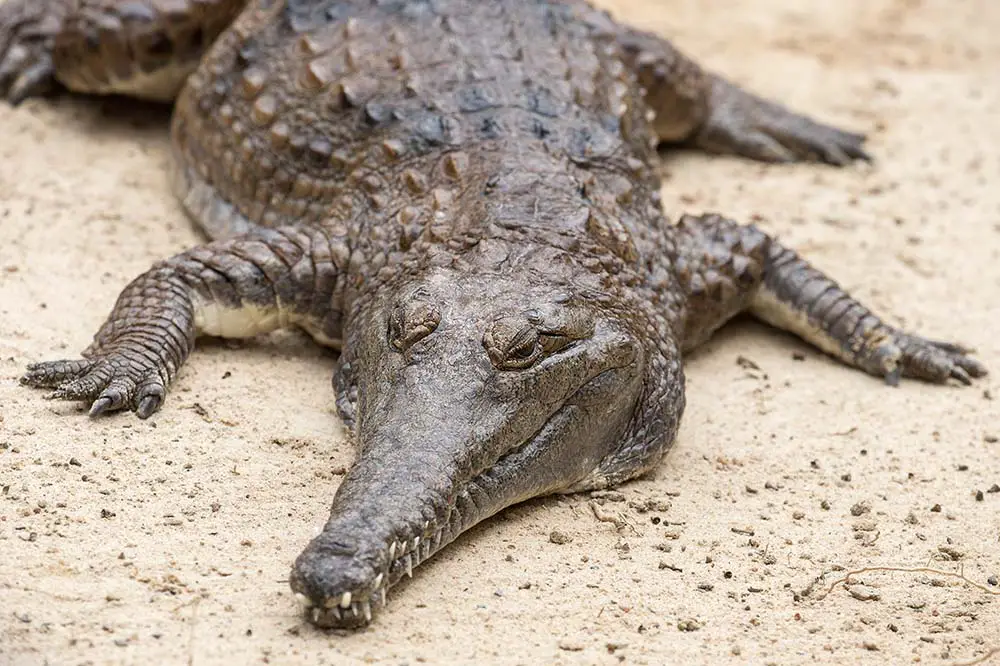
23 & 24 – New Guinea & Hall’s New Guinea crocodiles | Crocodylus novaeguineae/halli
Heading northeast, from Australia’s sunny shores, lies the island of New Guinea where the most recently discovered species exists. The New Guinea crocodile is a small to medium species, rarely exceeding 11.5 ft (3.5 m) in length. It was officially described as a species in 1928, since then, scientists have analysed live specimens and 51 skulls found on both sides of the central highlands, which now shows that individuals to the south are in fact a separate species named Hall’s New Guinea crocodile after the late Philip Hall, a scientist at the University of Florida who first proposed the species in the 1980’s Our journey concludes 2,500 km west of New Guinea in Southeast Asia where definitely 2 and possibly 3 species reside.
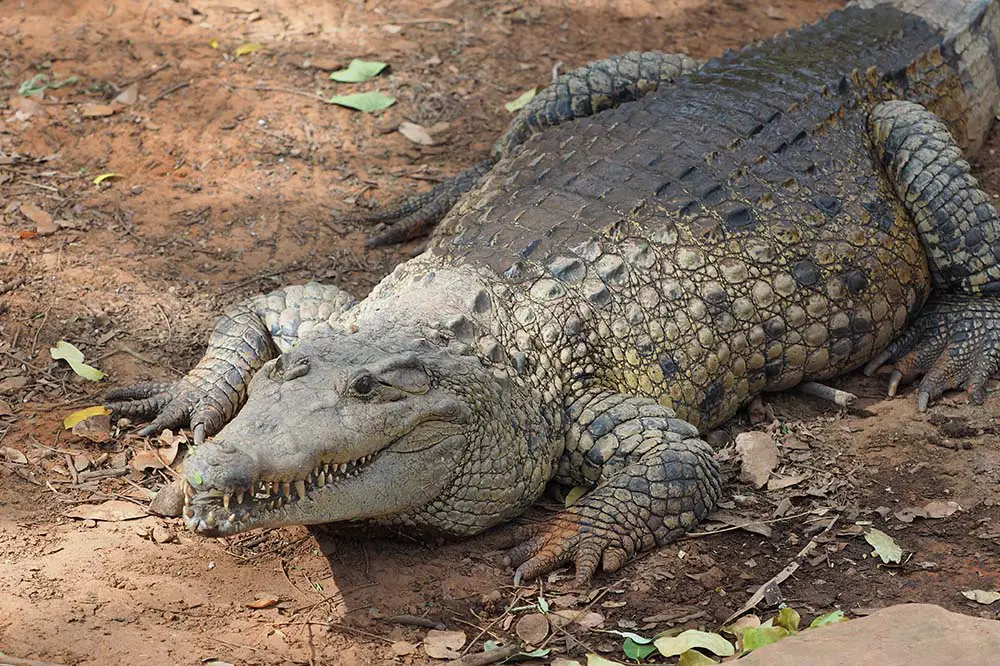
25 – Siamese crocodile | Crocodylus siamensis
The Siamese crocodile is critically endangered, with less than 1,000 remaining in the wild. Like the Cuban crocodile, the body ridge behind the eyes is more prominent than other species. They are medium in size, measuring no more than 13ft (3m) in length in the largest of cases. They are found in slow moving streams, rivers and swamps where they prey primarily on fish but also amphibians and other reptiles.

26 – Borneo crocodile | crocodylus raninus
There is one other species that may also exist on the island of Borneo, the Borneo crocodile whose range is unknown and about which there is little literature or photos. It was first described in 1844 when it was found to be distinct from the saltwater crocodile on the basis of snout shape and the structure of the scales on the neck and then revalidated in 1990. As such, some sources list the Borneo crocodile as a separate species and others as a synonym of the saltwater crocodile. The last crocodilian on our list is found due north on the islands of the Philippine archipelago.
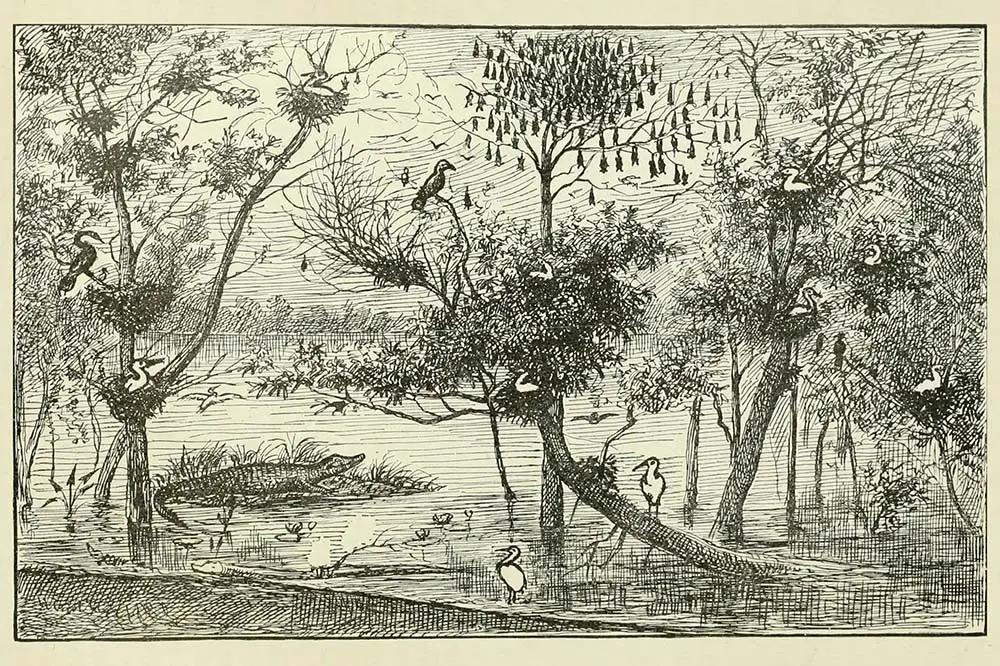
27 – Philippine crocodile | Crocodylus mindorensis
The Philippine crocodile is another critically endangered species with just 100 individuals remaining in the wild. At a maximum of 13ft (3m), they are a similar size to the Siamese crocodile. When they are born, hatlings exhibit a golden brown colour, which darkens with age. They have a broad snout and one of the cheeriest looking expressions of all crocodilian species. It is subject to debate whether they are more cheery than the quokka, which you can judge for yourself by watching this video on marsupial species.

Sources
IUCN Crocodile Specialist Group, Crocodilian Species List, Reptile Database, Animal Diversity, Wikipedia, National Geographic, IUCN Red List, Scutes and Osteoderms, Alligators vs Crocodiles, Crocodile Teeth & Notches, American Alligator vs American Crocodile, Mouth Gaping, Alligator Bellowing, Relationship between incubation temperature and hatchling gender, Animals with the strongest bite-force, Palustris meaning, Mugger crocodiles using tools, Hall’s New Guinea crocodile, Siamese Crocodile, Borneo Crocodile

